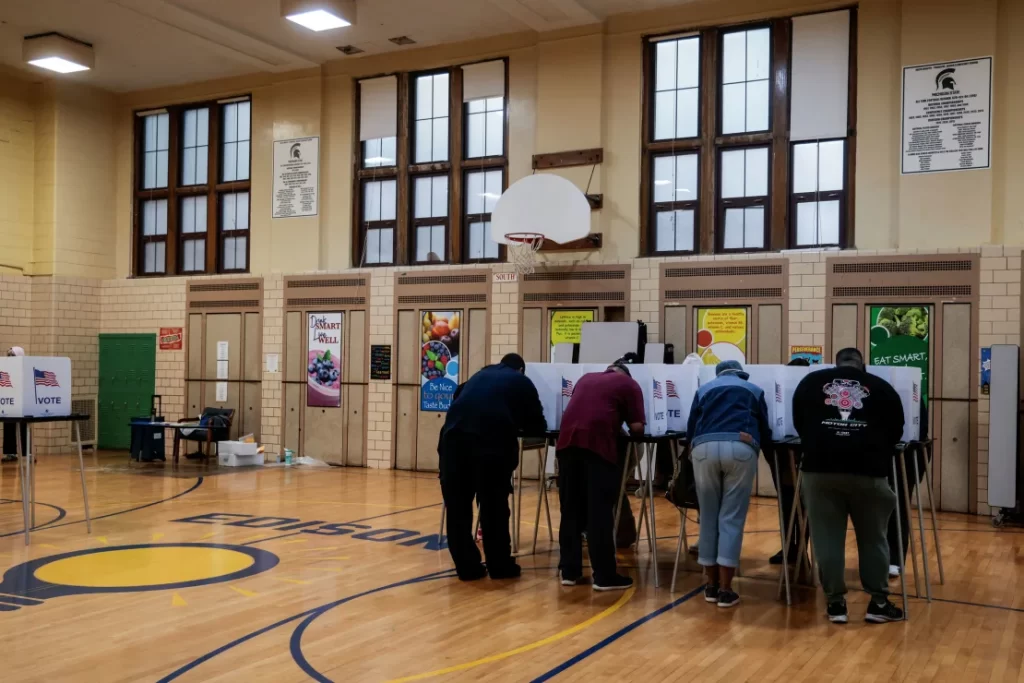President-elect Donald Trump achieved victories nationwide, enhancing Republican support in nearly all areas and fulfilling his commitments to attract a greater number of non-White voters, which contributed to his success against Vice President Kamala Harris.
With the aftermath of the 2024 presidential election behind us, an analysis of CNN’s exit polls and the county-by-county outcomes, in comparison to earlier elections, provides a deeper understanding of Trump’s victory.
The results, possibly of greater concern for Democrats, depict a challenging scenario for a party whose national coalition appears to be breaking apart. The suburbs that have traditionally supported them are now maxed out, Latinos are quickly shifting their allegiance to the GOP, and Trump is making slight gains among both urban and rural voters that will be challenging to counter.
Here are five key insights regarding the voters who supported Trump and their implications for the future:
The Latino realignment
A significant trend that could transform the American political scene is the substantial movement of Latino voters towards Trump. His increases were evident across the country, but most notably in Florida.
Trump achieved a victory of nearly 12 points in Miami-Dade County, which has a significant Cuban American population and an increasing number of Venezuelan immigrants. He became the first Republican presidential candidate to win this county in 36 years.
A potentially concerning indicator for Democrats beyond Florida was Trump’s solid showing in the Orlando region, which has a predominantly Puerto Rican Latino population, making the outcomes more indicative of broader national trends. Harris’ team had anticipated that the pro-Trump comedian’s derogatory comment about Puerto Rico at a Madison Square Garden rally would negatively impact those voters. However, the results indicated a significant shift toward Trump among them.
Trump’s victory by 1.5 points in Osceola County resulted in a reversal from the 14-point lead that President Joe Biden held four years ago. Additionally, Trump’s results showed a significant enhancement in Orange County, which encompasses Orlando. In this area, Biden had a 23-point advantage in 2020, but this time, Harris’s margin was reduced to just 5.6 points.
CNN’s exit survey revealed a significant shift among Latino voters within a mere four-year timeframe.
In the 2020 election, Biden secured 65% of the Latino vote compared to Trump’s 32%. However, Harris had a narrower lead, receiving 52% while Trump garnered 46%, indicating a significant decline in support within a demographic that constitutes 12% of the total electorate.
Among Latino men, the statistics were even more pronounced. Trump secured a 12-point advantage over Latino men, marking a 35-point shift compared to 2020. Should this significant change persist in upcoming elections, it could alter the landscape of American politics, affecting everything from presidential contests to state legislative struggles and beyond.

Significant advancements for the GOP at the border
The change in Latino voter preferences was evident along the border, especially in the Rio Grande Valley of southeastern Texas.
Starr County, where 97% of the population is Hispanic, had not supported a Republican presidential candidate since 1892, and the margins were significant; in 2016, Hillary Clinton secured a 60-point victory. However, this year, Trump ended that pattern, winning Starr County by 16 points. This shift serves as a striking illustration of the swift political changes occurring in the region.
Trump’s strong stance on border security resonated across the nation, particularly in Texas border communities, where many long-standing residents are deeply aware of the impacts of border crossings. Additionally, the cultural messages and mobilization strategies employed by Republicans have proven to be effective.
Democrats have grounds for optimism that they can halt or at least reduce this trend. While Republican Senator Ted Cruz made progress, he did not achieve the significant border victories that former President Trump did. Democratic incumbent Rep. Vicente Gonzalez barely retained his position in the Rio Grande Valley, facing a much tighter contest than he did against the same challenger in 2022. Similarly, Rep. Henry Cuellar, the House’s most conservative Democrat, also managed to hold on to his seat.
Republicans received positive news as the situation extended beyond Texas. In Arizona, a key battleground state, Yuma County—located in the southwestern part of the state—favorably voted for Trump by a margin of 6 points in 2020. This year, he secured the county with a 29-point lead.

Trump’s initiatives for urban development
During his visit to Detroit, Trump voiced his disapproval of the city. He claimed that Harris had devastated San Francisco during her tenure as district attorney. Additionally, he organized a rally in predominantly Democratic New York City, even though the state was not a battleground.
Although the efficacy of his campaign strategies can be questioned, it is clear that the former president connected with a growing dissatisfaction present in urban regions, where local governance is predominantly controlled by Democrats.
Trump’s share of the vote in Wayne County, which includes Detroit, increased by 3.4 percentage points from 2020. In contrast, Harris experienced a decline of 5.7 points. The Democratic ticket secured victory in the state’s most populous county, where large margins are essential for statewide success, with a margin of 85,000 fewer votes than in 2020. Trump’s improvements can be attributed partly to his outreach efforts toward Black men as well as Arab American voters.
The shifts in urban support for Trump were noticeable throughout the political landscape. He made considerable gains in New York City and its neighboring areas. Additionally, even minimal increases, such as the 2 to 3 point rise he seems to have achieved in Philadelphia since 2020, are noteworthy; this reduced the Democratic margin there by approximately 55,000 votes.
Trump’s gains were partly driven by support from Black men. According to CNN’s exit polls, there was only a 2-point national shift among Black men in favor of Trump. However, this change was significantly larger in critical states. For instance, in Pennsylvania, Biden’s lead of 89% to 10% shifted to a 72% to 26% victory for Harris, while in North Carolina, Biden’s 91% to 8% advantage turned into a 78% to 21% margin for Harris.

Harris’ stagnant suburban area
As Election Day approached, two critical questions emerged that could determine the results: Would Trump’s prolonged attempts to connect with men, especially young and non-White men, translate into votes? Additionally, could Harris surpass him by capitalizing on the recent Democratic successes in suburban areas?
The responses are: Affirmative. And negative.
The sole demographic where Harris saw an improvement over Biden’s performance was among women with college degrees. Her campaign aimed to make significant strides with this voter group—individuals who played a crucial role in the Democratic successes during the 2018 and 2022 midterms and who could potentially support former South Carolina Governor Nikki Haley in the 2024 Republican primary. This strategy is reflected in her decision to team up with former Wyoming Representative Liz Cheney, who lost her House seat in a 2022 primary after strongly opposing Trump, during the final stages of the campaign. However, these efforts did not suffice to prevent her overall decline.
A key aspect of Harris’ shortcomings can be observed in the counties adjacent to Detroit. Oakland County, a large suburban area that both campaigns focused on during the final days of the election, saw Harris victorious by 10 points and 85,000 votes. This result fell short of Biden’s 14-point, 114,000-vote triumph in 2020. In Macomb County, which Trump had previously won by 8 points and 40,000 votes four years earlier, the former president increased his margin of victory to 14 points with a 70,000-vote advantage.
These slight advantages for Trump accumulate rapidly in a state where he won against Harris by a margin of 78,000 votes.
Trump demonstrated a positive shift in key Western states, such as Nevada. The unique regulations for counting mail-in ballots in Nevada result in a slower tallying process, but initial signals suggest that Trump has achieved notable advancements, especially among newly registered independent voters in the Las Vegas area. Independents represented a larger portion of the electorate in Nevada compared to 2020, and their support shifted by 8 points towards Trump.
Locations where Democratic presidential candidates are unlikely to succeed
The significant difficulty that the national Democratic Party encounters with rural voters was clearly evident in two states that the party hasn’t secured in presidential elections for a generation: Missouri and Kentucky.
In Missouri, initiatives widely supported by Democrats gained significant public approval. This year, voters endorsed statewide ballot measures that ensure abortion rights, increase the minimum wage, and require paid sick leave.
Harris, however, lost by a margin of 15 points.
In Kentucky, the state that returned Democratic governor Andy Beshear to office last year in an election centered on cultural issues such as abortion and transgender rights, voters decisively turned down a suggested school voucher initiative.
They also turned down Harris, resulting in a 30-point win for Trump.
In almost every area, Trump increased his vote count in predominantly White, working-class, rural regions that have traditionally favored Republicans. These slight improvements made Harris’s task of uniting a successful coalition even more challenging — and ultimately unfeasible.
As the Democrats embark on a phase of introspection, they will need to confront the reason behind the national party’s negative image among voters who have previously supported the party on various policies and, at times, contributed to local successes for the party.
